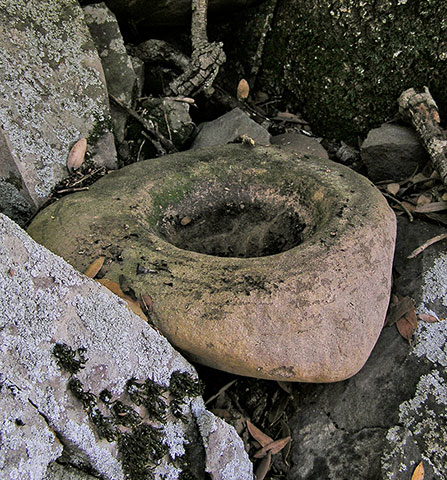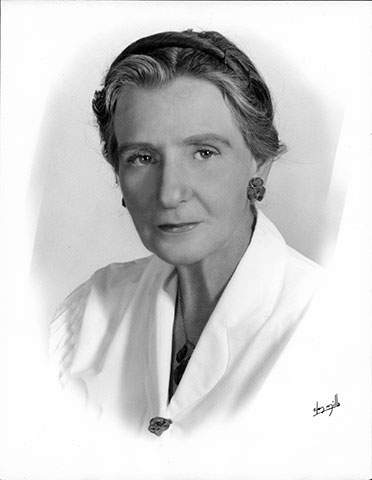Coe Park Preservation Fund
Henry W. Coe State Park
The Wilderness Next Door
A Brief History of
Henry W. Coe State Park

A Portable Stone Mortar
As early as 10,000 years ago, bands of nomadic big game hunters traveled through what is today's Coe Park, creating temporary campsites as they followed migrating herds of deer and elk. A thousand years ago, bands of hunter gatherers established village sites in sheltered areas near water. The staple of their diet was acorns, a dependable food source that made a semi-sedentary lifestyle possible. They remained here for hundreds of years until the late 1700s, when Spanish missionaries, promising them a new way of life, enticed them into nearby missions: San Juan, Santa Cruz, and San Jose.
In the 1800s, Mexican sheepherders built simple adobe homes here that provided them with shelter as they watched over their flocks of sheep. Outlaws, among them Joaquin Murietta, found hiding places in these hills, sometimes with the shepherds.
Soon after the gold rush in 1849, prospectors searched for quicksilver, valuable then because it was used to separate gold from its matrix. In the 1860s, the Civil War precipitated a search for copper; mining remains can be seen today on the southwestern slopes of Burra Burra Peak and along Steer Ridge.

Dilly Arnold at Black Oak Spring ca. 1900
By the time the federal surveys of the land were completed in 1881, homesteaders had already squatted on preemption claims throughout today's park-lands, but many of them soon found that 160 acres was not sufficient to provide a living. They sold out to a growing number of men who were filing multiple homestead claims, and who would consolidate these claims to form the large cattle ranches that provided the basis for today's park: Henry Coe, Mike Mahoney, Horace Willson, Perry Dowdy, and the Robison brothers.
In 1910, a daughter, Sada,was born in San Jose to Santa Clara County cattleman Henry Willard Coe and his wife, Rhoda. As a child, she developed a lifelong passion for the outdoors and her "beloved hills".

Sada Coe Robinson
Sada was a woman of vision. She knew the way of life she had known as a girl was gone forever as open space in Santa Clara County gave way to urbanization. She wanted people to have places of wilderness to balance the hectic pace of modern life.
In 1953 she gave her family's ranch, Pine Ridge, to the people of California to become a park in memory of her father, Henry Willard Coe, thus providing the heart of what is today the second largest state park in California.
Ten thousand years of human occupation have passed. All who have found a place here, whether for a day or for a lifetime, have been gentle with the land. They were good stewards, and the land sustained them and gave them food, shelter, and sometimes wealth. Today park visitors seek something different; a refuge from the pressures and stress of urban life — a refuge that can only be provided by the vast, untrammeled wilderness of Henry W. Coe State Park.
This vast wilderness should be a living memorial to those great and sturdy pioneers. She would make it a gift to the people to live forever as park in memory of her people.
Sada Coe Robinson from "A Park to the People"

